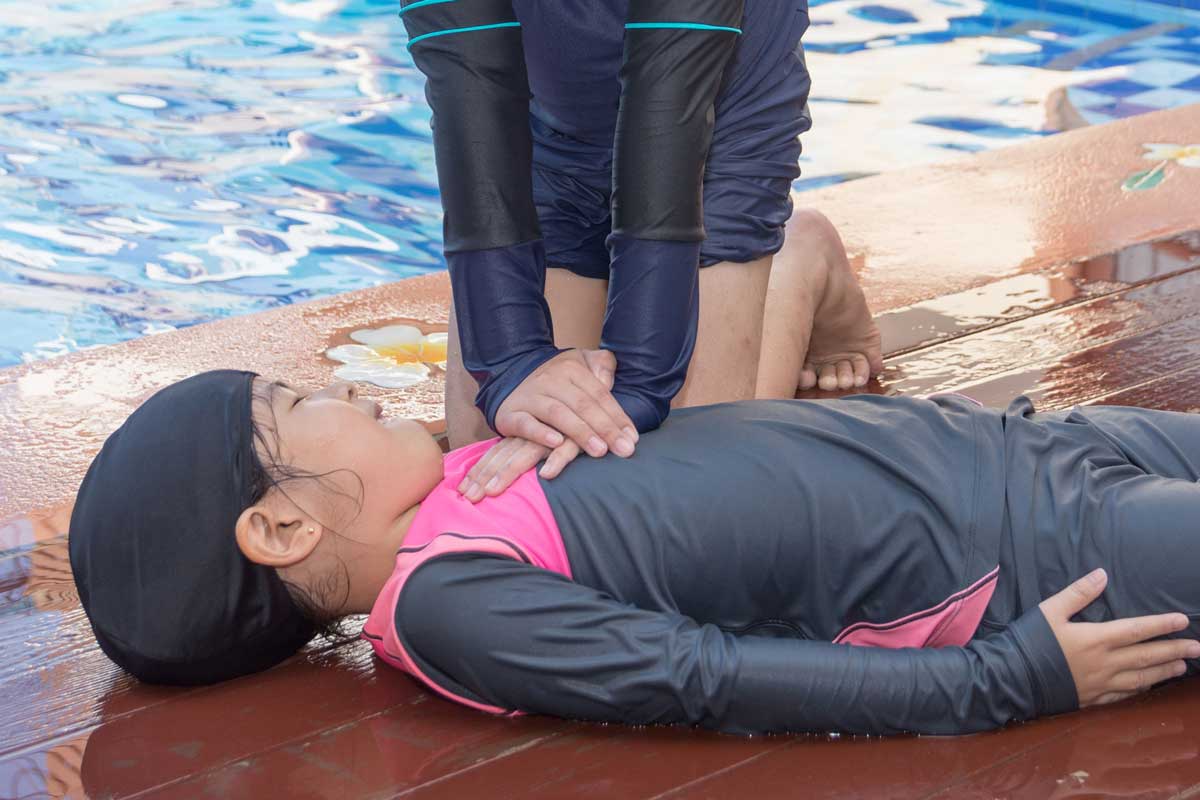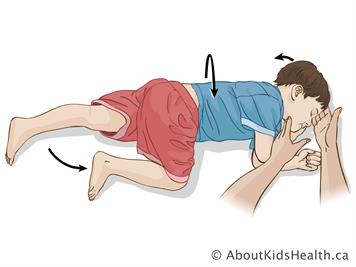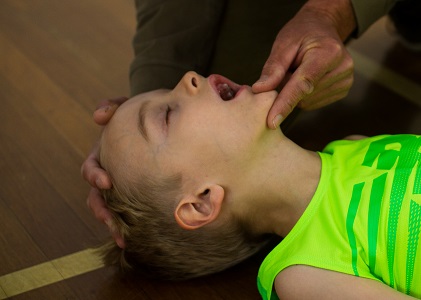How To Perform CPR On A Child- Survival Skills

CPR stands for cardiopulmonary resuscitation, it is an emergency lifesaving procedure that combines chest compression with artificial ventilation to preserve brain function until further measures are taken to restore spontaneous blood circulation and breathing.
The steps involved in carrying out a CPR is same for adults and kids, but the methods are slightly different because of the obvious fragility of kids compared to adults.
It is highly recommended that every parent goes on a first aid course, as it makes the process much easier to understand and remember.
READ ALSO: Aunt Saves 5 Months-Old-Baby’s Life Via CPR
Below is a full detailed sequence for carrying out a cardiopulmonary resuscitation for children (1-8 years old).
CPR Steps For Children
1. Ensure the area is safe:
First check for hazards, such as electrical equipment or other harmful conditions and clear the area.
2. Check Your Child’s Responsiveness:
Gently stimulate your child and ask audibly, “Are you all right?”.
3a. If Your Child Responds By Answering Or Moving
- Leave them in the position they were found in (provided they are not in danger)
- Check their condition and get help.
- While waiting for help, monitor their situation regularly.
3b. If Your Child Does Not Respond
- Shout for help.
- Carefully turn the child on their back.
- Open your child’s airway by tilting the head and lifting the chin.
- To do this, place your hand on their forehead and gently tilt their head back, and lift the chin with your fingers at the same time. If you suspect there may have been an injury to the neck, tilt the head carefully and gradually until the airway is open. Opening the airway however takes priority over a possible neck break.
READ ALSO: How To Perform CPR On A Child And A Baby
4. Check Their Breathing:
Keeping the airway open, look, listen and feel for normal breathing by putting your face close to your child’s face and looking along their chest.
- Look for chest movements.
- Listen at the child’s nose and mouth for breathing sounds.
- Feel for air movement on your cheek.
Look, listen and feel for no more than 10 seconds before deciding that they’re not breathing. Gasping breaths should not be considered to be normal breathing.
5a. If Your Child Is Breathing Normally:
- Turn them on their side.
- Check for continued breathing.
- Send or go for help – do not leave your child unless absolutely necessary.
READ ALSO: 8-month-old Baby Suffocates in Cot Liner| Mother Warns Other Parents
5b. If Your Child Isn’t Breathing Or Is Breathing Irregularly Or Less Frequently:
- Carefully remove any obvious obstruction in the mouth.
- Give 5 initial rescue breaths (mouth-to-mouth resuscitation), do this while holding the child’s airway open by lifting the chin, and pinch the nose shut. Take a deep breath and seal your mouth around the child’s mouth, blow into the child’s mouth for 1 second, and watch if their chest rises, give only 5 initial breaths.
Note: While doing this, note any gag or cough response – this is a sign of life.
6. Assess Signs Of Life:
Look for signs of life. These include any movement, coughing, or normal breathing – not abnormal gasps or infrequent, irregular breaths.
If there are definite signs of life, do the following:
- Continue rescue breathing until your child begins to breathe normally for themselves.
- Turn the child on their side into the recovery position and send for help.

- Continue to check for normal breathing and provide further rescue breaths if necessary.
No Signs Of Life Present:
Do the following, if there are no signs of life:
- Start chest compressions immediately.
- Combine chest compressions with rescue breaths, providing 2 breaths after every 30 compressions.
7. Chest Compressions General Guidelines:
- To avoid compressing the stomach, find the point where the lowest ribs join in the middle, and then 1 finger’s width above that. Compress the breastbone.
- Lift the fingers to ensure pressure is not applied over the ribs.
- Position yourself vertically above the chest and, with your arm straight, compress the breastbone so you push it down 5cm, which is approximately one-third of the chest diameter. The depth of chest compressions is very important.
- In larger children or if you’re small, this may be done more easily by using both hands with the fingers interlocked, avoiding pressure on the ribs.
- Release the pressure, then rapidly repeat at a rate of about 100-120 compressions a minute.
- After 30 compressions, tilt the head, lift the chin, and give 2 effective breaths.
- Continue compressions and breaths in a ratio of 2 breaths for every 30 compressions.
Although the rate of compressions will be 100-120 a minute, the actual number delivered will be fewer because of the pauses to give breaths.
READ ALSO: How To Help A Choking Child
8. Continue Resuscitation Until:
- Your child shows signs of life – normal breathing, coughing, movement of arms or legs.
- Further qualified help arrives.
- You become exhausted.
When To Perform A CPR On Your Child?
Perform CPR if your child shows the following symptoms:
- No breathing.
- No pulse.
- Unconsciousness.
The symptoms could be the result of choking, drowning, electrical shock, excessive bleeding, head trauma or other serious injury, lung disease, poisoning, and suffocation.





